Torremolinos, the Spanish town where Brigitte Bardot vacationed
Relive the golden age of the Costa del Sol on a walk along La Carihuela beach
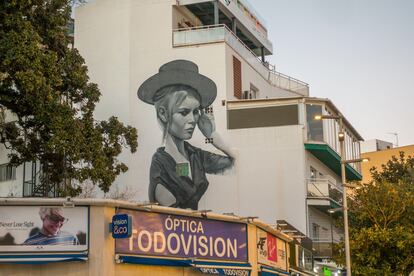

Torremolinos is where Frank Sinatra was arrested after getting into a fistfight with a photographer. It was Brigitte Bardot’s vacation destination in the fifties. The young Chiquito de la Calzada developed his flamenco career in the town, where Judy Garland, Kirk Douglas and Antonio Gades danced at the Tiffany’s nightclub. “There is no other place like it to sunbathe and rest,” Marlon Brando once said. The Mediterranean-influenced city has a decadent air and a hint of madness, and it yearns to return to those legendary years. “There is little left of the mythical Torremolinos,” says the historian José Luis Cabrera. The golden age was ended by mass tourism and unbridled urban development. But some corners still bear traces of the past where visitors can catch glimpses of history.
Brigitte Bardot’s beach
Young Brigitte Bardot’s walks on the beach of La Carihuela have become the stuff of legend. In 1957, the French actress filmed Roger Vadim’s The Moonlight Jewelers in the “wild paradise” – as she herself recently called it. She swam in the pool of the now-defunct club El Remo, where she once brought a donkey that she had fallen in love with. Now, La Carihuela’s two kilometers of promenade act as a shopping and restaurant center. The old boats and fishermen have been replaced by dozens of beach bars, hundreds of shops, thousands of hammocks and millions of tourists. It’s hard to choose where to sit down to eat an espeto, a skewer of grilled fish. A clue: the espetos at La Mar Bonita were chosen in 2021 as some of the best on the Costa del Sol.
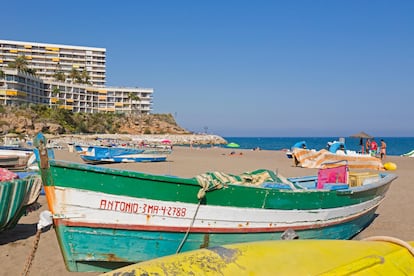
One step away stands the first five-star hotel in Torremolinos, the Hotel Pez Espada. Inaugurated in 1959, it is one of the best examples of so-called “relax architecture,” the movement that sought to create enjoyment and leisure amidst gray Francoist Spain. Ingrid Bergman, Orson Welles, Claudia Cardinale, Charlton Heston, Ava Gardner and Kim Novak all passed through its rooms, as well as Frank Sinatra, who came to the Costa del Sol to shoot Colonel Von Ryan. A photographer followed him to the establishment and the actor, fed up with the press, got angry. The two men came to blows, and headlines went on to proclaim Sinatra’s arrest. Today, a mural by the artist Nesui SRC on the La Carihuela boardwalk portrays the iconic singer.

On the way to the town’s center is a bluff where the old Santa Clara hotel stood. It was first the residence of the British soldier George Langworthy, who later launched the pioneering hotel. His guests included writers such as Emilio Prados, Luis Cernuda and Manuel Altolaguirre, as well as Salvador Dalí and Gala Éluard. In its place now stands the Castillo de Santa Clara apartments, a seventies-inspired building that towers over the sea. An old tennis court flanks the path to the Plaza de Cantabria, offering a lookout both on the urban disorder and the immensity of the Mediterranean. To the east, the Ritual hotel is a landmark for LGBT tourism, surrounded by unique spaces such as the Savoy Café, El Gato and the Scandinavia pension, whose tables are covered with pints of beer. The historic La Roca tower completes the retro panorama. Once the residence of the filmmaker Jess Franco, today the building is home to the director Ramón Salazar, among other illustrious residents, who descend to the beach through a bougainvillea-lined stairway passage.
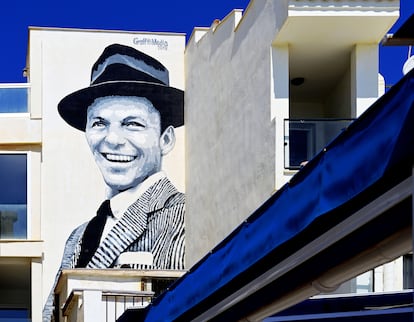
The building’s inhabitants also include Eve Field, once the star of Torremolinos nights as public relations liaison for the now-defunct Tiffany’s nightclub. Judy Garland was photographed inside the establishment, which now resembles an Andalusian farmhouse. The club was built on Palma de Mallorca Avenue, today a hodgepodge of businesses and architectural styles. Not everything has aged very well.
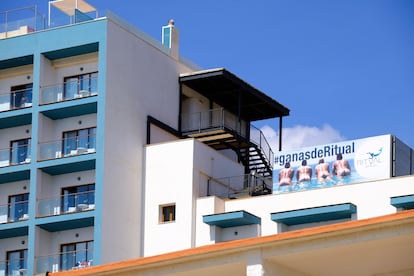
For shopping
Calle San Miguel is the commercial street par excellence. Whether it is summer or winter, it is packed with tourists in flip flops. The smell of fried fish mixes with the aroma of perfume shops. In 1963, John Lennon sat down to rest in one of the cafes in the area during his two-week vacation in the area. Perhaps he tried the local fried foods at the La Gamba Alegre bar, promoted by Serge Hornbostel, who said that in Torremolinos “the servants and liquor are amazingly cheap.” The square was also home to El Jaleo, a mythical flamenco bar, as well as a Belgian butcher shop, a Chinese restaurant and a burger joint, El Goloso. Today the epicenter is the El Granaino tapería.
The Pasaje Begoña is the best known establishment around the plaza. It housed Torremolinos’ first LGBT bars, such as the Pourquoi Pas? and Toni’s Bar. More than a hundred people were arrested for their homosexuality during a police raid in June 1971. In 2019 the passage was declared a Place of Historical LGBT Memory. Today, it shows few signs of life. The luminosity of the renovated Plaza de la Costa del Sol stands out. The huge pedestrian space is dominated by a Mercadona supermarket. A huge black and white mural shows a young Brigitte Bardot adjusting a Cordovan hat. It pays tribute to one of the women who helped create that legendary Torremolinos. Today it barely exists, but its echoes still resonate if you know how to listen.
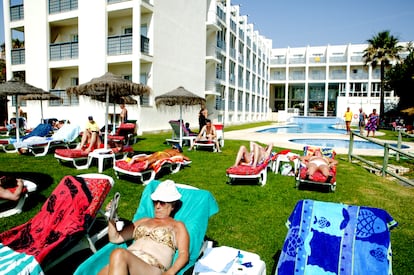
Tu suscripción se está usando en otro dispositivo
¿Quieres añadir otro usuario a tu suscripción?
Si continúas leyendo en este dispositivo, no se podrá leer en el otro.
FlechaTu suscripción se está usando en otro dispositivo y solo puedes acceder a EL PAÍS desde un dispositivo a la vez.
Si quieres compartir tu cuenta, cambia tu suscripción a la modalidad Premium, así podrás añadir otro usuario. Cada uno accederá con su propia cuenta de email, lo que os permitirá personalizar vuestra experiencia en EL PAÍS.
¿Tienes una suscripción de empresa? Accede aquí para contratar más cuentas.
En el caso de no saber quién está usando tu cuenta, te recomendamos cambiar tu contraseña aquí.
Si decides continuar compartiendo tu cuenta, este mensaje se mostrará en tu dispositivo y en el de la otra persona que está usando tu cuenta de forma indefinida, afectando a tu experiencia de lectura. Puedes consultar aquí los términos y condiciones de la suscripción digital.
More information
Últimas noticias
Most viewed
- Sinaloa Cartel war is taking its toll on Los Chapitos
- Oona Chaplin: ‘I told James Cameron that I was living in a treehouse and starting a permaculture project with a friend’
- Reinhard Genzel, Nobel laureate in physics: ‘One-minute videos will never give you the truth’
- Why the price of coffee has skyrocketed: from Brazilian plantations to specialty coffee houses
- Silver prices are going crazy: This is what’s fueling the rally










































